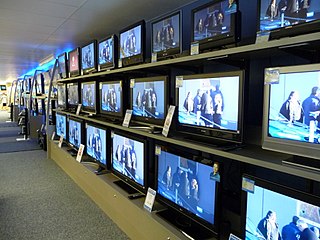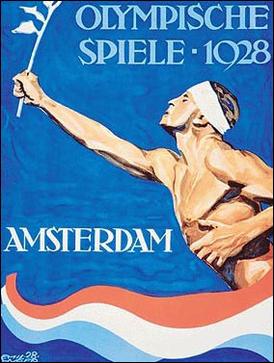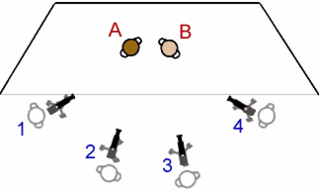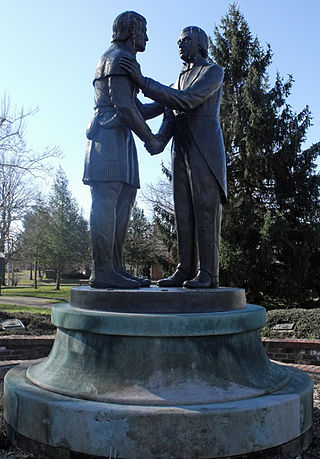Related Research Articles

"God Save the King" is the national anthem of the United Kingdom and the royal anthem of each of the British Crown Dependencies, one of two national anthems of New Zealand, and the royal anthem of most Commonwealth realms. The author of the tune is unknown and it may originate in plainchant, but an attribution to the composer John Bull has sometimes been made.

Television (TV) is a telecommunication medium for transmitting moving images and sound. Additionally, the term can refer to a physical television set, rather than the medium of transmission. Television is a mass medium for advertising, entertainment, news, and sports. The medium is capable of more than "radio broadcasting", which refers to an audio signal sent to radio receivers.

John Logie Baird was a Scottish inventor, electrical engineer, and innovator who demonstrated the world's first live working television system on 26 January 1926. He went on to invent the first publicly demonstrated colour television system and the first viable purely electronic colour television picture tube.

The 1928 Summer Olympics, officially known as the Games of the IX Olympiad and commonly known as Amsterdam 1928, was an international multi-sport event that was celebrated from 28 July to 12 August 1928 in Amsterdam, Netherlands. The city of Amsterdam had previously bid for the 1920 and 1924 Olympic Games, but was obliged to give way to war-torn Antwerp in Belgium for the 1920 Games and Pierre de Coubertin's Paris for the 1924 Games.

A ceremony is a unified ritualistic event with a purpose, usually consisting of a number of artistic components, performed on a special occasion.

The Honourable Society of Lincoln's Inn is one of the four Inns of Court in London to which barristers of England and Wales belong and where they are called to the Bar.
The News was an afternoon daily tabloid newspaper in the city of Adelaide, South Australia, that had its origins in 1869, and ceased circulation in 1992. Through much of the 20th century, The Advertiser was Adelaide's morning broadsheet, The News the afternoon tabloid, with The Sunday Mail covering weekend sport, and Messenger Newspapers community news.

Mechanical television or mechanical scan television is an obsolete television system that relies on a mechanical scanning device, such as a rotating disk with holes in it or a rotating mirror drum, to scan the scene and generate the video signal, and a similar mechanical device at the receiver to display the picture. This contrasts with vacuum tube electronic television technology, using electron beam scanning methods, for example in cathode-ray tube (CRT) televisions. Subsequently, modern solid-state liquid-crystal displays (LCD) and LED displays are now used to create and display television pictures.

The William Harvey Hospital is a hospital in Willesborough, Ashford, Kent, England. It is one of the three main hospitals in the East Kent Hospitals University NHS Foundation Trust area and is named after William Harvey (1578–1657), the Folkestone-born doctor who discovered the blood circulatory system.

John Hartley Manners was a London-born playwright of Irish extraction who wrote Peg o' My Heart, which starred his wife, Laurette Taylor, on Broadway in one of her greatest stage triumphs.

The concept of television is the work of many individuals in the late 19th and early 20th centuries. The first practical transmissions of moving images over a radio system used mechanical rotating perforated disks to scan a scene into a time-varying signal that could be reconstructed at a receiver back into an approximation of the original image. Development of television was interrupted by the Second World War. After the end of the war, all-electronic methods of scanning and displaying images became standard. Several different standards for addition of color to transmitted images were developed with different regions using technically incompatible signal standards. Television broadcasting expanded rapidly after World War II, becoming an important mass medium for advertising, propaganda, and entertainment.

The multiple-camera setup, multiple-camera mode of production, multi-camera or simply multicam is a method of filmmaking and video production. Several cameras—either film or professional video cameras—are employed on the set and simultaneously record or broadcast a scene. It is often contrasted with a single-camera setup, which uses one camera.

Constitution Square Historic Site is a 3-acre (0.012 km2) park and open-air museum in Danville, Kentucky. From 1937 to 2012, it was a part of the Kentucky state park system and operated by the Kentucky Department of Parks. When dedicated in 1942, it was known as John G. Weisiger Memorial State Park, honoring the brother of Emma Weisiger, who donated the land for the park. Later, it was known as Constitution Square State Shrine and then Constitution Square State Historic Site. On March 6, 2012, the Department of Parks ceded control of the site to the county government of Boyle County, Kentucky, and its name was then changed to Constitution Square Historic Site.

Emanuel School is a private, co-educational day school in Battersea, south-west London. The school was founded in 1594 by Anne Sackville, Lady Dacre and Queen Elizabeth I and today occupies a 12-acre site close to Clapham Junction railway station.

The Town of Brisbane was a local government area for Brisbane in Queensland, Australia from 1859 to 1903.
Tommy Anderson (1887–1928) was an Australian rugby league footballer who played in the 1900s and 1910s. He played in the first ever match for the South Sydney rugby league club against North Sydney at Birchgrove Oval, and scored Souths' first ever premiership try. Anderson was also the NSWRFL Premiership's leading try scorer in the 1909 season.

An apostle, in its literal sense, is an emissary. The word is derived from Ancient Greek ἀπόστολος (apóstolos), literally "one who is sent off", itself derived from the verb ἀποστέλλειν (apostéllein), "to send off". The purpose of such sending off is usually to convey a message, and thus "messenger" is a common alternative translation; other common translations include "ambassador" and "envoy". The term in Ancient Greek also has other related meanings.

An Age of Kings is a fifteen-part serial adaptation of the eight sequential history plays of William Shakespeare, produced and broadcast in Britain by the BBC in 1960. The United States broadcast of the series the following year was hosted by University of Southern California professor Frank Baxter, who provided an introduction for each episode specifically tailored for the American audience. At the time, the show was the most ambitious Shakespearean television adaptation ever made, and was a critical and commercial success in both the UK and the US. Performed live, all episodes were telerecorded during their original broadcast.
Events from the year 1861 in Scotland.

The Queen's Messenger was the first television drama. The experiment was broadcast by a Schenectady, New York station on September 11, 1928. It was a radio drama adapted for television and broadcast both sound and moving pictures. These were received by televisions three inches (76 mm) in diameter that were set up in various places all around the city. There were special effect props for this broadcast to enhance the actors' performance and their sounds.
References
- ↑ Early Television Foundation, Jenkins Newspaper Articles.
- ↑ Kane, Joseph N. (January 3, 1940). "Some Television 'Firsts'". Variety. p. 88. Retrieved July 9, 2019.
- ↑ Early Television Foundation, Baird Mechanical Color System (1928).
- ↑ Daniel Stashower, The Boy Genius and the Mogul: The Untold Story of Television, Broadway Books, 2002, p. 144. ISBN 0-7679-0759-0.
- ↑ Early Television Foundation, The Queen's Messenger.